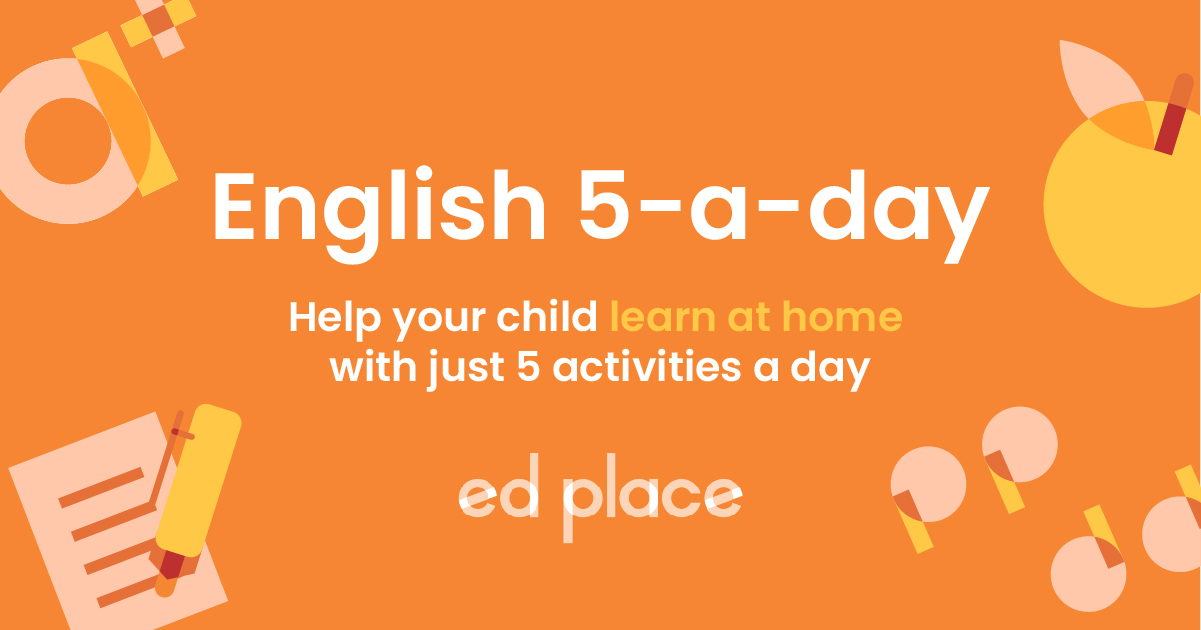
EdPlace's GCSE Home Learning English Language Lesson: Improve Creative Writing
Looking for short lessons to keep your child engaged and learning? Our experienced team of teachers have created English, maths and science lessons for the home, so your child can learn no matter where they are. And, as all activities are self-marked, you really can encourage your child to be an independent learner.
Get them started on the lesson below and then jump into our teacher-created activities to practice what they've learnt. We've recommended five to ensure they feel secure in their knowledge - 5-a-day helps keeps the learning loss at bay (or so we think!).
Are they keen to start practising straight away? Head to the bottom of the page to find the activities.
Now...onto the lesson!
Want to Become an Assistant Crafty Crafter?
Follow our step-by-step guide to help your child improve their creative writing into a nail-biting narrative that will impress even the most critical examiner!
A piece of writing is just that isn’t it? When did you last have to think about not only writing a detailed description but also using a variety of sentence types, a plethora of fancy words and include punchy punctuation to show that you actually know how to use an apostrophe?
It can seem like you are being the harshest of critics when your child has laboured over a piece of writing and then you tell them to go away and make some improvements. I know, I know - this then is often followed by an onslaught of eye-rolling, tutting and the occasional mini-meltdown (did I mention door slamming?) It's totally understandable when your child has laboured over a piece of creative writing, but, nonetheless, painstaking for every parent!
So, let’s make this easier for you. Your EdPlace team have put together an article which aims to make the art of crafting a normality in the process of revising those all-important creative writing questions that your child needs to master.
We’re confident that by the end of this article your child will be able to:
1) Understand accurate punctuation, sentence structure variety and impressive vocabulary
2) Develop their creative writing
3) Explain how they can make positive alterations which help with improved grades
Step 1: Perfect Punctuation
We’re not going to confuse matters by asking your child to use every punctuation mark known to man – let’s take a simplistic approach. We're going to concentrate on 5 main punctuation marks and understanding how to use them correctly:
1) Full stops: used at the end of a sentence (make sure a capital letter follows this also)
2) Commas: used in complex sentences (more on this later) or in a list – if you can, try to include a list in your writing, then it will have ticked the ‘comma’ box
3) Apostrophes: used for contractions e.g. can’t/didn’t (avoid using these for formal writing) or to indicate possession e.g. the tree’s branches
4) Speech marks: used for direct speech e.g. the witch screamed, “I’ll get you my pretty!”
5) Ellipsis: used to add a cliff-hanger e.g. cautiously, the children peered round the old, creaky door…)
Step 2: Spice Up Your Sentence Structure!
There are four main sentence types. Examiners are like bloodhounds sniffing out the trail from the humble ‘minor’ sentence to the godfather of all sentence structure archetypes – the ‘complex sentence.’ Examiners love to see students demonstrating their knowledge of how to use these four grammatical beauties in their creative writing, and will reward students for their efforts.
1) Minor: ‘Marley was dead.’ (Often used for short, snappy introductions and to emphasise a dramatic event.)
2) Simple: ‘The door to the old counting-house was propped open.’ (has a subject – ‘the door’ and tells us what is happening to the door ‘was propped open’)
3) Compound: ‘The door to the old counting-house was propped open, and Bob Cratchit was working hard at his desk.’ (a simple sentence connected to another simple sentence)
4) Complex: ‘Because Scrooge wanted to keep an eye upon Bob, the door to the old counting-house was propped open.’ (a subordinate clause forms part of the sentence supported by the main clause – the comma is used to separate the two parts.)
Step 3: Impress the Examiner With Your Expansive Vocabulary...
To put it simply…fancy words. Have your child think of some synonyms (words that have a similar meaning) or connotations (words that make you think of other words/ideas) to make their writing a little more unusual and interesting.
For instance: ‘The large dog barked at the boy.’
Fancy words added: ‘The gigantic hound growled at the petrified and innocent child.’
Which is more exciting? More importantly, which would most impress your examiner?
Step 4: Have a Go Yourself!
What type of sentence?
1) Although she was tired, Amy carried on revising for her exams.
2) I’m starving!
3) The exam was difficult, but the students smashed it!
4) Miss Honey was proud of her class.
Punctuate the following passage:
the teachers pen fell onto the floor adam picked it up and ink exploded all over his face george shouted blues definitely not your colour adam the headteacher walked in and the whole class fell silent
Re-write the sentences to make them more ‘fancy':
1) The tiger walked through the jungle.
2) The wind blew through the trees.
3) Some animals at the zoo are dangerous.
Step 5: Activities
We hope your child is feeling more confident about producing their own impressive creative writing! If so, now is the perfect time for you to put them to the test. Here are some activities which will help to consolidate their learning. We recommend doing them in this order so that their learning builds progressively.
All activities are created by teachers and automatically marked. Plus, with an EdPlace subscription, we can automatically progress your child at a level that's right for them. Sending you progress reports along the way so you can track and measure progress, together - brilliant!
Activity 1 - Check Your Writing Skills 1
Activity 2 - Check Your Writing Skills 2
Activity 4 - Use Persuasive Techniques and Rhetorical Devices
Activity 5 - Writing to Describe: A Street Scene
Answers
1) Complex 2) Minor 3) Compound 4) Simple
The teacher’s pen fell onto the floor. Adam picked it up, and ink exploded all over his face. George shouted, “Blue’s definitely not your colour Adam!” The headteacher walked in, and the whole class fell silent…
Examples of possible answers:
1) Silently, the hungry, tiger prowled the lustrous jungle searching for its next unsuspecting victim.
2) The warm, gentle breeze rustled through the soft green leaves making them dance in the sunlight.
3) Several fierce creatures at the wildlife zoo are deadly!








